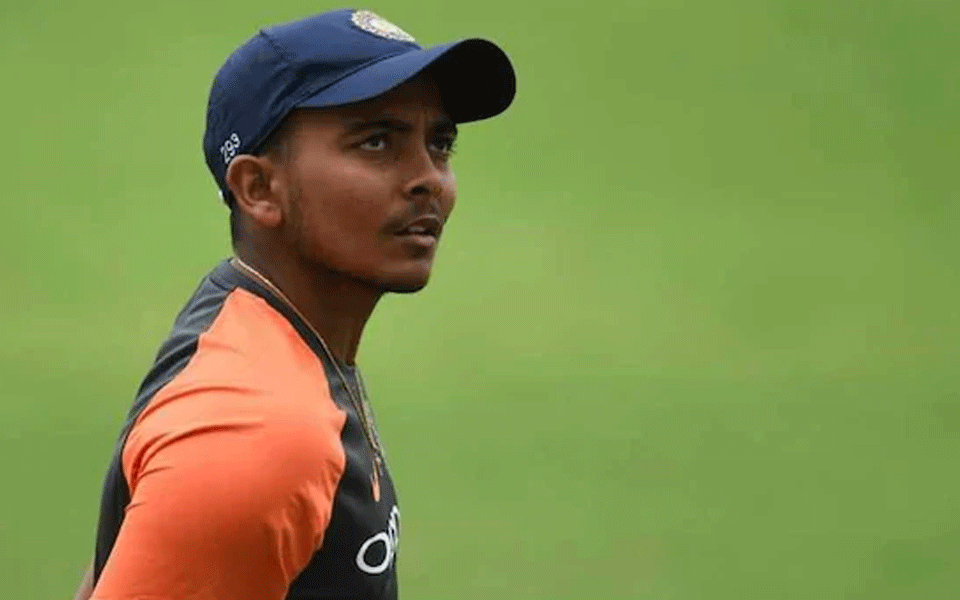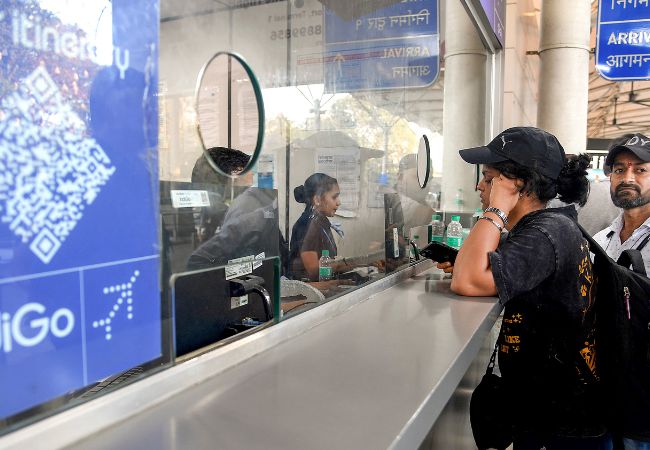New Delhi, Jul 30: Talented India opener Prithvi Shaw was on Tuesday banned from all forms of cricket for a period of eight months after failing a dope test, the BCCI said.
A BCCI release said Shaw had "inadvertently ingested a prohibited substance, which can be commonly found in cough syrups".
Shaw's suspension is retrospective in nature, starting from March 16 and ending on November 15.
Apart from Shaw, two other cricketers Akshay Dullarwar and Divya Gajraj were also suspended for the same offence.
Shaw had provided a urine sample as part of the BCCI's anti-doping testing programme during the Syed Mushtaq Ali Trophy on February 22, 2019 in Indore. His sample was subsequently tested and found to contain terbutaline.
"Terbutaline, a specified substance, is prohibited both In and Out of Competition in the WADA Prohibited List of Substances," the BCCI release stated.
"Prithvi Shaw registered with Mumbai Cricket Association, has been suspended for doping violation," the BCCI said.
Terbutaline is generally used to treat problems related to breathing and can be consumed if the athlete in question avails a Therapeutic Use Exemption (TUE) certificate in advance, which Shaw didn't avail.
The 19-year-old, who has played two Test matches for India scoring 237 runs with a hundred and a half-century, had earlier pulled out of India A's one day and Test series against West Indies A reportedly due to a hip injury.
The 19-year-old junior World Cup winning skipper had made a mark last year, hitting a hundred on Test debut against the West Indies, but was sent back from the tour of Australia after twisting his ankle during a practice game.
Shaw is currently at the National Cricket Academy undergoing rehabilitation for a reported hip injury, but the BCCI statement is an indicator that he was pulled out of Mumbai Premier League after testing positive.
The BCCI said that Shaw was charged with violating BCCI's Anti-Doping Rules (ADR) article 2.1.
"On 16th July 2019, Shaw was charged with the commission of an Anti-Doping Rule Violation (ADRV) under the BCCI Anti-Doping Rules (ADR) Article 2.1 and provisionally suspended pending determination of the charge.
"Shaw responded to the charge by admitting the ADRV but asserting that it was inadvertent, being caused by his ingestion of the over the counter cough syrup he had taken for his cough," the release stated.
Shaw explained that he had taken terbutaline inadvertently to treat a respiratory tract infection and not as a performance-enhancing drug.
"Having considered all of the evidence and taken expert external advice, the BCCI has accepted Shaw's explanation of the cause of his ADRV, and on that basis has agreed that a period of ineligibility of eight months should apply, together with disqualification of certain results," the BCCI ruled.
The BCCI then explained why the suspension was back-dated.
"Under BCCI ADR Article 10.10.3, Shaw is entitled to full credit against that period of ineligibility for the provisional suspension that he has been serving since 16th July 2019.
"In addition, because Shaw promptly admitted his ADRV upon being confronted with it by the BCCI, there is discretion under BCCI ADR Article 10.10.2 to back-date the start of the period of Ineligibility to the date of sample collection (22nd February 2019). However, the BCCI ADR Article 10.10.2 also requires Shaw to actually serve one half of the period of ineligibility," BCCI said.
"Therefore, further to BCCI ADR Article 10.10.2, the eight-month period of Ineligibility will be deemed to have started to run on 16th March 2019, so that it will end at midnight on 15th November 2019."
However, the BCCI's rules would allow Shaw to start training from September 15.
Along with Shaw, Vidarbha U-23 player Dullarwar has also been suspended for eight months after he tested positive for Desacetyl Deflazacort, a metabolite of Deflazacort. He was playing a BCCI U-23 one day game.
Rajasthan's U-19 cricketer Gajraj has been suspended for six months after he was found to have taken acetazolamide, a diuretic and masking agent, during a Cooch Behar Trophy game.
— Prithvi Shaw (@PrithviShaw) July 30, 2019
Let the Truth be known. If you read VB and like VB, please be a VB Supporter and Help us deliver the Truth to one and all.
Colombo (PTI): A mobile hospital set up by India in Sri Lanka has provided medical care to over 2,200 people affected by Cyclone Ditwah, as New Delhi ramped up its assistance to the flood-ravaged island nation with engineering support and delivery of fresh relief consignments, the Indian mission here said on Sunday.
Sri Lanka has been grappling with widespread flooding, landslides and severe infrastructure collapse triggered by the cyclone, leaving several districts isolated and severely straining the country's disaster-response capacity.
At least 627 people have been killed and 190 remain missing as of Sunday noon due to catastrophic floods and landslides caused by extreme weather conditions since November 16.
Sharing a social media post by the Ministry of External Affairs on its X handle, the Indian High Commission said a field hospital set up by India in Mahiyanganaya near Kandy has provided medical care to more than 2,200 people affected by the cyclone since December 5.
The hospital has also performed 67 minor procedures and three surgeries, it said. The field hospital was airlifted to Sri Lanka by an IAF C-17 aircraft along with a 78-member Indian medical team on Tuesday.
In another post, the mission said Indian Army engineers, working with Sri Lanka Army Engineers and the Road Development Authority, in Kilinochchi have begun removing a damaged bridge on the Paranthan–Karachchi–Mullaitivu (A35) road, a key route disrupted by the cyclone.
"This joint effort marks another step toward restoring vital connectivity for affected communities," it said.
India has additionally sent nearly 1,000 tonnes of food items and clothing contributed by the people of Tamil Nadu. Of these, about 300 tonnes reached Colombo on Sunday morning aboard three Indian Naval ships.
High Commissioner Santosh Jha handed over the supplies to Sri Lankan Minister for Trade, Commerce, Food Security and Cooperative Development Wasantha Samarasinghe.
India, on November 28, launched 'Operation Sagar Bandhu', a Humanitarian Assistance and Disaster Relief (HADR) initiative, to aid Sri Lanka in its recovery from the devastation caused by Cyclone Ditwah.
Since the launch of the operation, India has provided about 58 tonnes of relief material, including dry rations, tents, tarpaulins, hygiene kits, essential cloths, water purification kits and about 4.5 tonnes of medicines and surgical equipment, the Indian mission said in a press release on Sunday.
Another 60 tonnes of equipment, including generators, inflatable rescue boats, Outboard Motors, and excavators, have also been brought to Sri Lanka, it said, adding that 185 tonnes of Bailey Bridge units were airlifted to restore critical connectivity along with 44 engineers.
Two columns of the National Disaster Response Force, comprising 80 experts and K9 units with specially trained dogs, assisted with immediate rescue and relief efforts in Sri Lanka.
Besides the field hospital in Mahiyanganaya, medical centres have also been set up in the badly hit Ja-Ela region and in Negombo. INS Vikrant, INS Udaygiri, and INS Sukanya provided immediate rescue and relief assistance to Sri Lanka.
Apart from the two Chetak helicopters deployed from INS Vikrant, two heavy-lift, MI-17 helicopters of the Indian Air Force are actively involved in evacuations and airlifting relief material, the release said.
At the request of the Sri Lankan Disaster Management Centre, a virtual meeting was organised between DMC and the Indian Space Research Organisation (ISRO)'s National Remote Sensing Centre on Saturday.
Since the onset of the disaster, ISRO has been providing maps to assist DMC in its rescue efforts, the release said.





